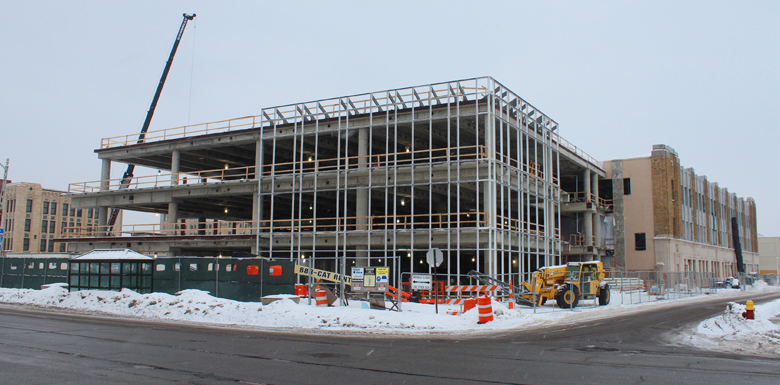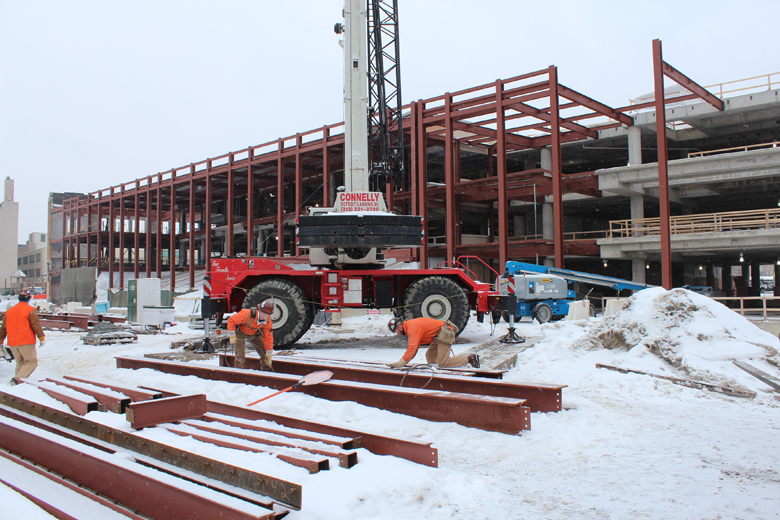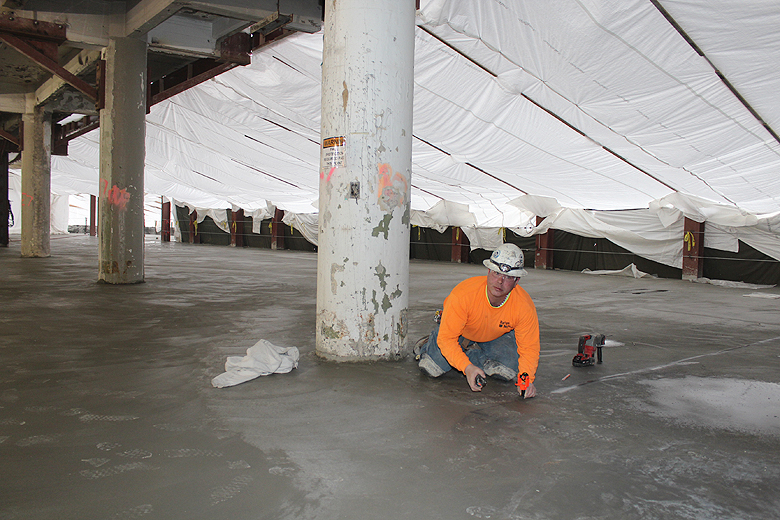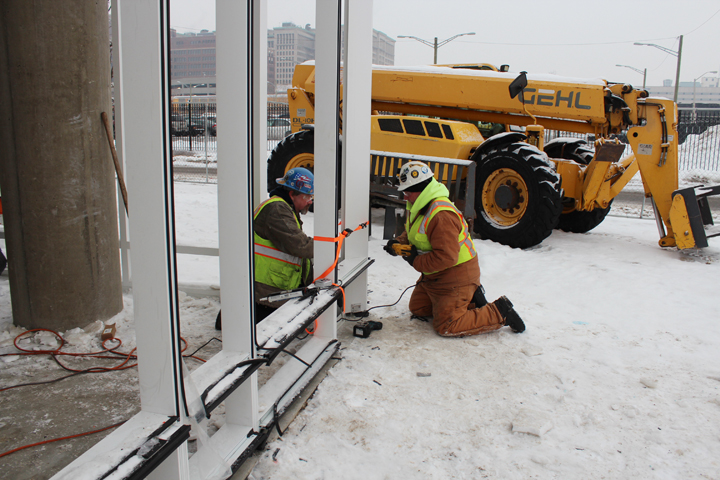Old, new are blended to create WSU Biomedical building
Date Posted: February 28 2014
 DETROIT — Placing a new biomedical research facility into a former car dealership might be the ultimate example of “adaptive reuse” of an old building.
DETROIT — Placing a new biomedical research facility into a former car dealership might be the ultimate example of “adaptive reuse” of an old building.
That’s what’s going on at the northern edge of Wayne State University’s campus, where the former Dalgleish Cadillac dealership has been shelled out and is being incorporated into the school’s new Multidisciplinary Biomedical Research Building. It’s the biggest project in Wayne State’s history.
Located along an entire city block at Amsterdam Street between Woodward and Cass avenues, the $93 million project will create about 200,000 square-feet of space for about 450 researchers and staff. It will include wet and dry laboratories, faculty offices and common areas, as well as clinical space. The three-level building will also be an important campus landmark along Woodward Avenue.
“This project brings together a number of biomedical disciplines under one roof, and will give researchers a better opportunity to share and collaborate,” said Wayne State University Director-Project Management Anne Vandenbussche. “But the placement of this project is also visually an important feature, offering a gateway to the north end of the campus. Plus it will put 450 people who will work in the building in this area every day, and that’s going to be important to developing the area.”
Ground was broken on the project in December 2012, and occupancy is expected to take place in the spring of 2015.
The finished project will be a blend of the old and the new, with a new 70,000-square-foot addition featuring a three-story glass curtain wall greeting visitors and motorists on the building’s Woodward Avenue side. Tied in on the west side of the building is where things get interesting from a renovation and re-use standpoint. The new biomedical research building will incorporate much of the brick exterior and the gutted interior of the former Dalgleish Cadillac dealership. The building was erected in 1927 with an Albert Kahn design, and is an important part of the New Amsterdam Historic District, which incorporates a number of buildings erected pre-Depression. Unfortunately, another historic structure, the American Beauty Electric Iron building, was demolished as part of this renovation.
There are currently about 60 Hardhats on the project. The workforce will peak out at about 100. “They’re professional, they’re trained, they’re good,” said WSU Facilities Planning and Management Project Manager Ruhtab Sahota. “The workers help us out; they help each other out. There’s lots of teamwork and cooperation.”
Structurally, the former Dalgleish building, Vandenbussche said, “had lots of surprises.” The building’s structure needed to be strengthened, especially after the removal of a vehicular ramp. But she said the main task of beefing up the old building’s structure centered around the need to accommodate the weight of modern chillers, boilers and other mechanical devices that will be placed on the roof. “The roof loads were the issue,” she said. “We did significant reinforcing between the beams and columns to make sure everything is safe.”
Befitting lab space, the building will have separate environmental controls in various research spaces, 20 exhaust hoods, backup 2.4 megawatt generator power, and a system to shut down internal forced air movement in the event of the release of an airborne hazard.
According to Wayne State, the new biomedical building will include wet and dry laboratories, faculty offices and common areas, as well as clinical space. Faculty members from across the university will populate the new building, from the School of Medicine, the College of Engineering, the College of Liberal Arts and Sciences, the School of Social Work, and the Eugene Applebaum College of Pharmacy and Health Sciences will conduct research at the facility. Ninety-three percent of the structure will be occupied by Wayne State University, with the remaining 7 percent housing partners from the Henry Ford Health System, including its bone and joint research program and biomechanics motion laboratory.
Research in the biomedical research building will be arranged into thematic areas — cardiovascular disease; metabolic disorders such as diabetes, hypertension and obesity; systems biology; biomedical engineering; bioinformatics and computational biology; and translational behavioral science. It will be Wayne State’s first new biomedical research facility since 2002.
Barton Malow-Brinker Joint Venture is acting as project manager. Barton Malow Safety Manager Jon Lynch said the project has exceeded 100,000 man-hours, with only a single injury related to a tire-changing accident. “Every day we stress safety,” he said. “We want a good culture of safety here. We want people to go home the same way they came in.”

IRON WORKERS Tom Weaver and Matt Rajda of Local 25 hook up iron in a lay-down area of the Wayne State University Biomedical Research Building. They’re employed by Ideal Contracting.

TRANSFERRING A LINE measurement in what will be an atrium at the new WSU facility is Daryl Maul of Bricklayers and Allied Craftworkers Local 2. He’s employed by Barton Malow.

SETTING UP A CURTAIN WALL at the Wayne State Biomedical Research Building are (l-r) Rick Crowley, Jr. and Rick Morris of Glaziers and Glassworkers Local 357/Michigan Painters District Council 1M. They’re employed by Madison Hts. Glass.

WAYNE STATE UNIVERSITY’S Multidisciplinary Biomedical Research Building in a photo taken from Woodward Avenue. The old Dalgleish Cadillac dealership, at right, is being incorporated into the new building.
